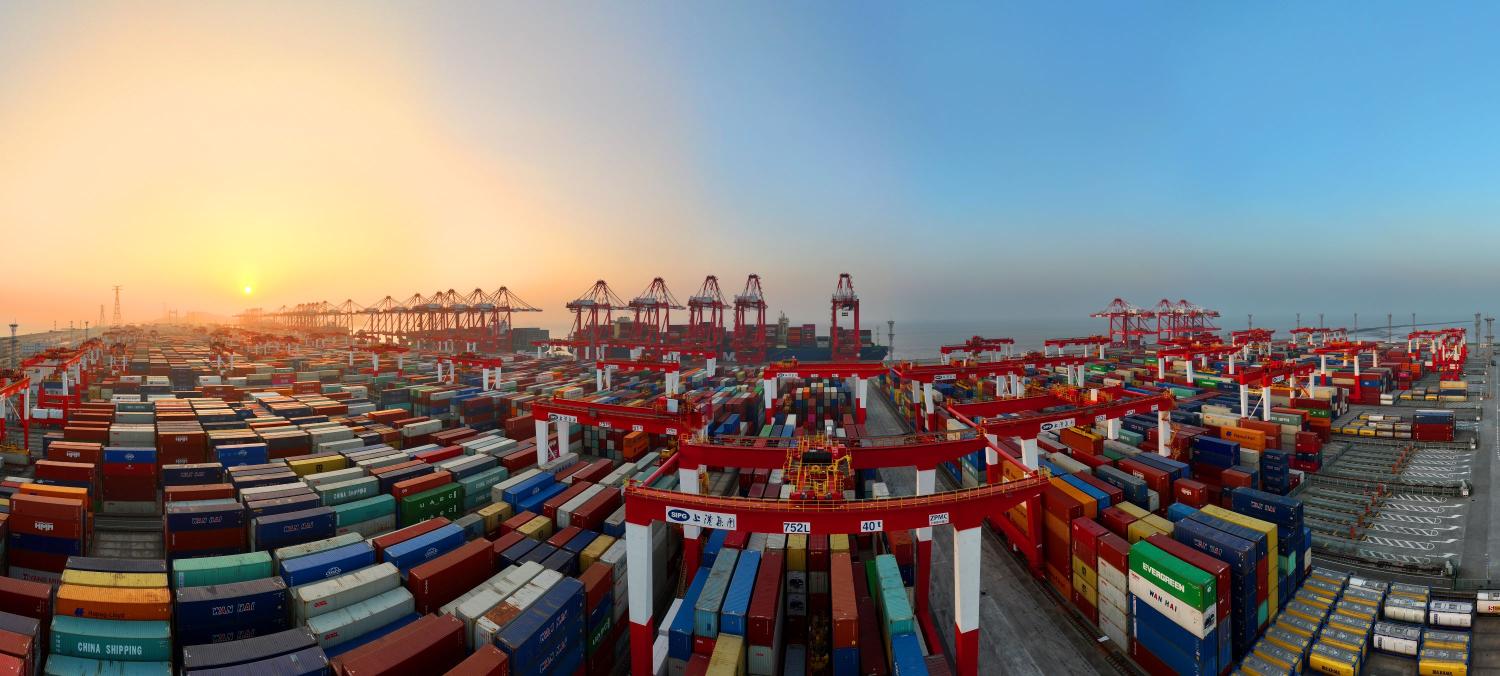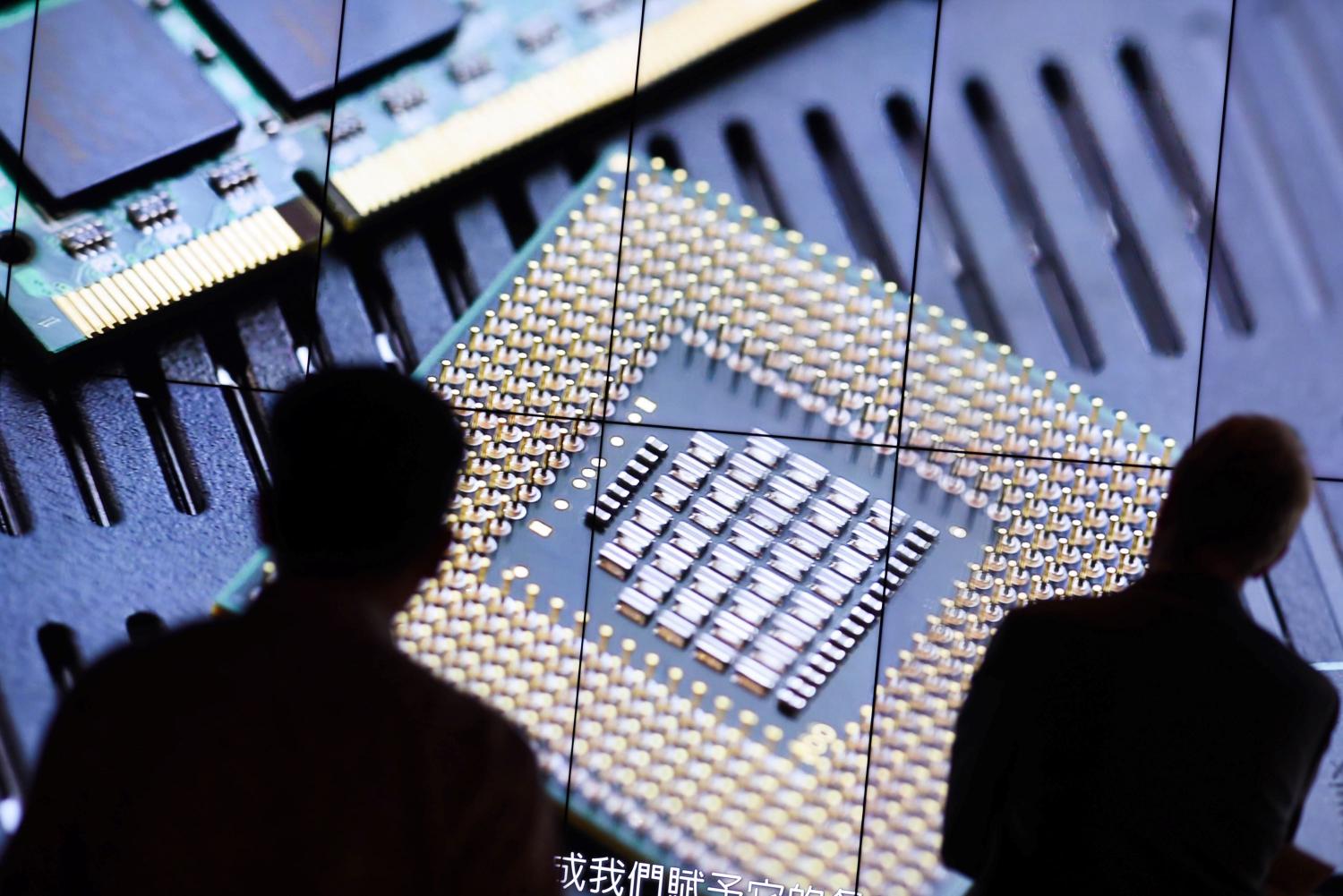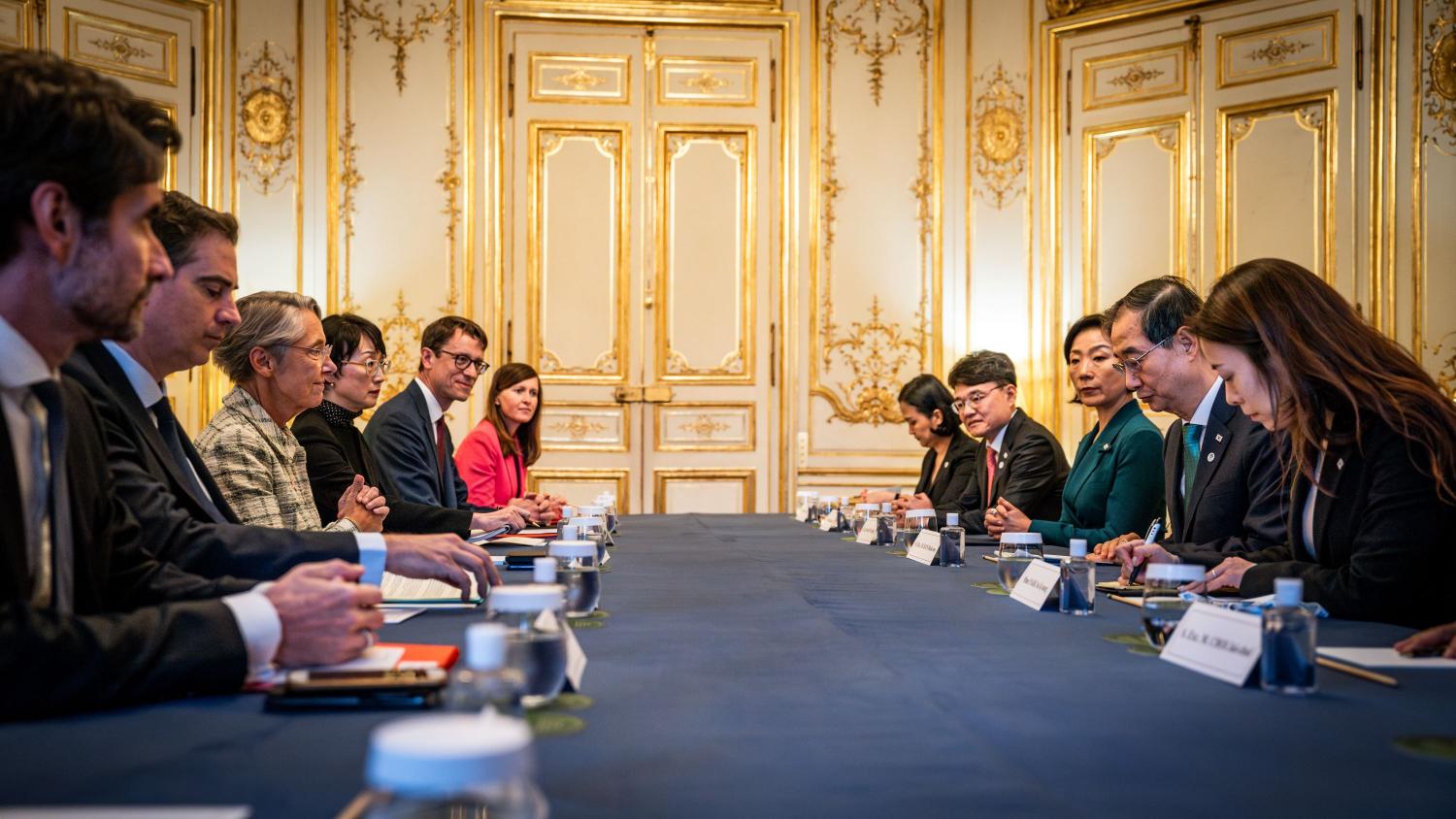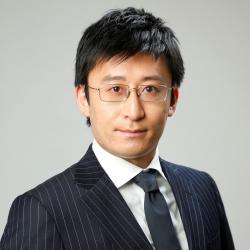Economic statecraft figures centrally in the U.S. quest to secure its prosperity and security by leading on technological innovation, developing human capital, and promoting an advanced manufacturing base. It also guides U.S. foreign policy priorities of competing strategically and responsibly with China, harnessing cooperation with leading tech democracies, and advancing new economic security tools.
In this new era, Asia is a focal point for U.S. endeavors. It is the region where the U.S. peer competitor—China—has risen, where the majority of the global middle-class lives, and where key U.S. allies and partners, which play outsized roles in critical supply chains, sit on regional hotspots where tensions continue to rise.
On December 14, 2023, Mireya Solís, director of the Center for East Asia Policy Studies and Philip Knight Chair in Japan Studies, convened a group of leading experts—Jason Hsu, Igata Akira, Sarah Kreps, Joshua Meltzer, David Wessel, and Yoo Myung-Hee—to discuss American economic statecraft in the Asian century. The edited transcript below captures their assessment of the drivers of the rise of economic security, the new contours of industrial policy and novel uses of export controls, and the implications of these trends for regional dynamics.

Drivers of change
MIREYA SOLÍS:
There has been a profound transformation in U.S. foreign economic policy. The United States built a deep economic relationship with China and used to champion the negotiation of comprehensive free trade agreements. The current situation, however, is very different. China and the United States had a trade war and are rivals on technology, and the United States has become skeptical of free trade agreements. The notion that economic security is national security has become pervasive in U.S. foreign economic policy and the policies of many East Asian economies.
What are the most important drivers, both internally and externally, for this change? Let’s first focus on the United States. Given its economic and technological heft, its actions influence others. And in many ways, it has been a first-mover in this space.
SARAH KREPS:
There seemed to be a consensus among economists that overall globalization was net welfare enhancing. It’s therefore surprising to see this burst of reticence and protectionism. When the 2016 presidential campaign was warming up, Hillary Clinton said, if I had to do it over again, I would not do the Trans-Pacific Partnership the way it was concluded. Bernie Sanders had been leading that critique from the left and Donald Trump came along and took up that mantle on the populist right. He came into office in 2017 and later launched the trade war with China. In 2021, when President Joe Biden came into office, many thought maybe he would withdraw some of these tariffs. Not only did he not do that, but Biden actually increased the tariffs on other items and passed export controls that are increasingly aiming to choke off China in the tech sector.
There had been this move from the more populist-leaning side of the U.S. political spectrum to question globalization. It is fair to say there were sectors of the economy and certain demographic groups that were left out of the benefits of globalization. The Global Financial Crisis also led to economic dislocations and job losses that further catalyzed support for populism and anti-globalization sentiment. Both parties have taken up that mantle in some way, so going forward, I don’t see any signs that there will be big reversals since the protectionist and anti-free trade sentiment associated with anti-globalization is one of the rare areas where there seems to be bipartisan consensus.
JOSHUA MELTZER:
There are multiple drivers here. It’s easier to say “China,” but I think there is a fundamental question about how the trading system was built and how it has dealt with China. I’m not talking about the China shock and the impact on jobs.
Some stark numbers underscore what China has meant for the global economy. China accounts for about 18 percent of global GDP, yet it accounts for over 30 percent of global investment and about 13 percent of global consumption. If you look at investment rates in an economy, they’re usually around 18-20 percent of GDP. In developing economies, they’re maybe 30-35 percent at the high end. China has had investment rates well above 40 percent and closer to 45 percent for decades. This has meant a massive oversupply of capacity. It’s unprecedented. China has developed this sort of export engine on the back of huge amounts of government-led investment, soft budget constraints on state-owned enterprises (SOE), subsidies, and so forth.
China is exporting $1 trillion more today than it was pre-pandemic. Yet its economy’s structure has meant that its share of consumption domestically, and also globally, is relatively minuscule. Its capacity to absorb imports from other parts of the world is way out of whack with its need to export. That structural element to the Chinese economy has played out globally over many decades now with surging exports.
There are second- and third-order consequences. Manufacturing has essentially been deindustrialized in many countries where you’ve had unemployment. One of the core drivers has been this deep imbalance in the Chinese economy.
The question for the United States has become how do you respond and what does that mean ultimately for the World Trade Organization (WTO) and the most-favored nation (MFN) and national treatment rules? There is a longstanding argument that the WTO has the capacity to absorb countries with different economic systems, that not everyone has to be market-driven. Look at South Korea, Japan, and Singapore—which have very different systems for managing their economies.
There were a lot of challenges with Japan in the 1980s, but its economy was significantly smaller. At that time, there was no WTO, so trade disputes were dealt with bilaterally under the General Agreement on Tariffs and Trade system of dispute settlement. There were the Plaza Accords and some export restraints, and then Japan’s economy slowed. In contrast, China is a magnitude larger and while the rules are able to deal with different economic and political systems to a point, we may be past that with China.
SOLÍS:
Skepticism that the WTO can effectively discipline China has run high in both the Trump and Biden administrations. Add to that U.S. complaints that the Appellate Body has engaged in judicial overreach and that trade restrictions imposed for national security are self-judging, and the transformation of the U.S. approach to the WTO comes into view.
When it comes to the Biden administration’s broader vision of U.S. foreign economic policy, what National Security Advisor Jake Sullivan articulated in a speech he gave at Brookings in April 2023 is very significant. He was very critical of the old Washington Consensus and alluded to an emerging new Washington Consensus.
David, do you think we have a consensus in the United States on the parameters of our foreign economic policies? Or is it still very much a contested idea with little clarity for the path forward?
DAVID WESSEL:
Some things seem to be enduring: one, this anxiety about the rise of China, and second, the sense—I’m not sure that I share it—that somehow trade has been bad for American workers. The distinguishing characteristic of those two bumper stickers is that you can hear them as loudly from Republicans as from Democrats. That seems to be a significant change.
I agree that it is striking that the United States’ international economic policy is delivered by the national security advisor. I think that may be a reflection not of a fundamental shift but of the current administration, where in contrast to, say, the Obama administration, the economic team has much less influence.
It would be interesting to see what Lael Brainard does as head of the National Economic Council, which puts someone with experience in international economics in that role. You can see in the competing speeches by Janet Yellen, the Treasury secretary, and Katherine Tai, the U.S. trade representative, that there’s tension within the administration about how to frame this.
We can agree on the factors. As you suggested, national security has risen. A lack of confidence in multilateral institutions has risen. I was struck that when Sullivan spoke about trade, it was all about the workers. He didn’t use the word “consumer,” which is quite a shift from, say, the Clinton administration. But I think it’s a matter of degree. How much will economic pressures crowd out some of this angst about national security?
We had a Chatham House rules discussion about U.S. economic policy toward China. Some from the business community said it has always been torn. How angry should we be at China for stealing intellectual property or making it hard for us to do business? And how much do we have to worry about the American government making it hard for us to do business?
Think about the debate over whether the United States should allow Ford to build a factory that makes batteries with technology from China. These skirmishes will determine where we draw the line. Obviously, they’ve drawn the line on high-end chips. How small is this “small yard, high fence” that Sullivan talks about? I don’t think we have a clear view of that.
SOLÍS:
Indeed, another important factor behind the shift in U.S. foreign economic policy is that how the United States conceptualizes the China challenge is different. China has greater ambitions and capabilities in developing cutting-edge technologies and advanced manufacturing. Its “Made in China 2025” policy and the relaunch of industrial policies have raised many concerns. The Biden administration, in particular, points to China’s civil-military fusion practices (siphoning commercial technology for military development) to justify its stepping up in all areas of economic security.
IGATA AKIRA:
The importance of President Trump’s tariffs on China was mentioned before. From the perspective of Japan, that wasn’t a “China” policy. It was an American foreign policy toward Asia because Japan was also hit with this same tariff. Japan was worried but the real shift in Japan’s perception was triggered by the Huawei and ZTE ban under the National Defense Authorization Act in 2018. The Japanese government and the Japanese private sector started feeling that U.S. policy toward China was really changing. The implication went beyond a ban on a couple of telecommunications companies: Japanese companies, which were selling software and hardware to the U.S. government, were no longer able to use embedded systems of which Huawei and ZTE were a part.
When the Biden administration came in, Japan thought that U.S. policy toward China may change. But soon afterward, we realized it would continue but was more sophisticated because the U.S. government started talking to Japan, asking “What does Japan think? How can Japan contribute? How can the international framework contribute?”
The United States was one factor for Japan changing its own economic security policy, but the primary motivation came from the changes in China. The amendment of the National Intelligence Law (2018), the Hong Kong National Security Law (2020), the Export Control Law (2020), the Anti-Foreign Sanctions Law (2021), and various cybersecurity-related laws from 2016 to 2021 have had a profound impact on how the Japanese government and industries perceive economic security. Japan has also been faced with China’s dual circulation strategy and increasing cases of economic coercion and economic statecraft. The Japanese people have realized that perhaps U.S. supremacy is declining with China’s relative rise. Japan has reoriented its foreign policy in a fundamental way to deal with this new world. It has now embraced the concept of economic security, and this is evident in the diplomatic relationship with various countries around the world from coordination on issues such as supply chain diversification, countering economic coercion, and critical and emerging technology development.
There is also the tech factor. The United States decided to identify the fundamental technologies and emerging technologies. The Japanese government realized that it needed to do something about that too. The very nature of these technologies means that any dual-use technology—artificial intelligence, Quantum, biotechnology, semiconductors—can be applied to military uses.
JASON HSU:
The shift in geopolitics has created a shock in the formula that used to work for global trade: invented in the United States, made in China, and shipped to the world. Taiwan has been an integral part of this global trade in terms of semiconductors, information and communication technology, and computer electronics products. The world benefited from this ubiquitous supply chain integration, cheap production, and competitive sourcing and manufacturing as well.
The geopolitical shift has caused a tectonic impact among different partners. Taiwan has been grappling with the shock and trying to figure out ways for its industries to cope. The obvious case in point is TSMC, which makes 90 percent of the world’s advanced microchips, with 60 percent of these chips made in Taiwan. It is a wake-up call to Taiwan’s firms that the products they make are no longer just used in average daily life, but also for military and national security purposes.
The increasingly difficult decisions Taiwan’s businesses face are no longer just business decisions, but they are underinformed and ill-prepared for dealing with the geopolitical complexity.
How do we ensure that our companies stay competitive and are cooperating with Taiwan’s like-minded partners to develop a comprehensive strategy that makes the products still accessible and competitive in terms of pricing and ensures delivery without a hitch?
Another important consideration is the relocation of the supply chain. Taiwan has taken steps to relocate most of its high-end production outside of China and ship them either back to Taiwan or to Southeast Asia. We still keep the low-end supply chain in China. But the cost of relocation has been astronomical, and the process is long and painful. Every supply chain player has to have, what I call, a “bifurcating strategy.” Plan A is what to do with your China assets and capacity. Plan B is the “China-plus one” strategy. Where do you go if you move out of China? Will you be able to produce the same quality and at the same price point?
I am still skeptical that things will normalize back to the way they were before. We have begun to realize the practical steps needed to implement a “total shift” strategy for supply chains, upskilling, and uptraining. To transfer or duplicate the ecosystem Taiwan developed over the last three decades either to Japan or here in the United States requires coordinated efforts among partners with a shared vision and necessitates transparency on partners’ needs and demands.
YOO MYUNG-HEE:
The shift in policies has been reshaping the international economic order from a rules-based to a security-driven governance system. The rise of China and strategic competition between the United States and China have brought the past era to an end. It started with a trade war, but now it’s been evolving into strategic competition due to technology competition being elevated to a national security issue. Last year, when Sullivan made a speech on technology issues, he provided a rationale for U.S. export controls and indicated leading in force-multiplying, computing-related technologies such as semiconductors, biotechnology, and clean tech is a national security imperative. National security is infiltrating economic and trade policy.
In South Korea’s case, this is affecting our trade and economic policies. COVID-19 and the invasion of Ukraine have also raised our awareness of the importance of supply chain resilience. Economic security and supply chain resilience are priorities for South Korea. It is very important to strike the right balance between enhancing supply chain resilience and restricting trade in response to legitimate security concerns in a targeted way while keeping the flow of commerce free and maintaining the global trading system.
In South Korea, we are also working on various supply chain resilience initiatives, such as the Indo-Pacific Economic Framework (IPEF) and the Mineral Security Partnership (MSP). But at the same time, we are still concluding free trade agreements with other countries. South Korea doesn’t want to lose sight of trade’s positive role in fostering economic growth.
SOLÍS:
This seems to be a key difference. In Asia and many other corners of the world, we don’t see the skepticism of free trade like in the United States. This is reflected not only in the appetite elsewhere to negotiate comprehensive trade agreements, but also to taper the economic security measures so they don’t impose undue burdens on supply chains.
Why don’t we see the same backlash against globalization in East Asia as in the United States?
IGATA:
I completely agree that there’s a bit of a gap. Whenever I talk to my Korean, Taiwanese, and European colleagues about WTO reform, they say the current WTO system is failing, so we need to change it. But when I talk to American colleagues, they say the WTO is dead and we have to make new rules of the game.
The reason for this gap goes back to the point that Japan and other Asian countries need trade. Generally speaking, the United States is less reliant on trade compared to Japan and Europe. I think the situation is similar in South Korea and Taiwan, if not more so.

The revival of industrial policy
SOLÍS:
The old Washington Consensus was very critical of industrial policy but now it has gone mainstream. No one is shy about laying out industrial policy plans, doling out subsidies and tax credits, and nurturing their own industrial base. In the United States, we see a lot of emphasis on domestic manufacturing through the Inflation Reduction Act (IRA) to build green sectors at home, and with the CHIPS and Science Act, semiconductors becoming central to economic and foreign policy.
What are the critical vulnerabilities that the United States seeks to remedy through the CHIPS and Science Act? What are the challenges ahead as the United States attempts to rebuild its semiconductor industry?
KREPS:
These policies are a complex tapestry of many different factors. From a U.S. perspective, electoral politics influence why you get coalitions that support these policies. Given the Electoral College system, the key states that have been pivotal in the last couple of elections are those that lost out on globalization. Michigan, Ohio, Pennsylvania, and Wisconsin—Rust Belt states were hollowed out due to the consequences of comparative advantage in globalization but also the Global Financial Crisis that inflicted economic wounds on these parts of the United States. These dislocations galvanized the view of trying to reshore industry and recreate manufacturing hubs in these states.
What makes the semiconductor issue unique is that it brings together that concern about resilience that we saw during the pandemic—being unable to have reliable access to chips that are crucial for both U.S. national security and economy but are also essential to the Chinese military and economy. It became the unicorn issue on which both the left—which is more supportive of bringing jobs back home—and the right—tapping into the China hawk wing of the Republican Party—can agree. These policies gain political steam since they generate a pretty broad coalition within the United States because of the different sentiments that China and manufacturing tap into.
SOLÍS:
There is strong concern in the United States about the lack of domestic manufacturing in advanced chips, and the heavy reliance on East Asia and one firm in particular. Hence, the efforts to bring that capability here to the United States. Are the $39 billion in investment incentives of the CHIPS and Science Act truly impressive when you consider the cost of an advanced fab? Can this seed money be enough to create a new ecosystem of chip manufacturing in the United States? There are also talent shortages to consider.
WESSEL:
You’ve identified the challenges. It’s not enough money and we don’t have the personnel. People often make the comparison to how the anxiety over the Soviet Sputnik affair led to a redistribution of where we spend our R&D money and education.
Sarah’s point is the right one. The reason it might work is because it appeals to this national machismo. How could we possibly be outcompeted by the Chinese on something involving science and technology? And what happens if there’s a war in the South China Sea and suddenly TSMC can’t send us chips? The combination of national pride, hesitancy to be reliant on China, and concern over national security threats leads me to believe that this will persist. This is why it was bipartisan. But also, it’s hard sometimes for voters to understand why members of Congress are not willing to invest in low-income children in the United States but are willing to invest in this experiment.
HSU:
The piece about chips and industrial strategy that the United States is missing is what I call “fundamental chips,” basically the legacy chips that we use in our daily lives to power our economy, the ones that you put in your microwave oven and your cars. These were the chips that were in short supply during the COVID-19 pandemic.
As of today, China has the capability to produce the majority of these chips. The United States, while spending over $52 billion on the CHIPS and Science Act, is focusing on cutting-edge nodes, 2-nanometer and 3-nanometer chips, which account for a very small amount of the chips that are needed for our economy. The current weapons systems, especially missiles and the software that controls launching, are not constructed with advanced chips. They use legacy chips, a more mature technology that is larger than today’s cutting-edge chips.
China has been spending a significant amount to ensure that it achieves dominance in the fundamental chips and the critical materials needed to secure those chips. The United States needs to make sure the strategy is not lopsided when it comes to addressing the fundamental needs of both the economy and national security.
China could still get a lot of the chips it needs through third parties and workarounds. Even for artificial intelligence (AI) chips, which the United States has been heavily restricting via export controls, China may just buy them from Middle Eastern countries. The largest AI training centers located in the Middle East are all operated by Chinese companies. Chinese research centers now train their most advanced AI models in Middle Eastern countries.
We need to look at this from a more comprehensive strategic standpoint and understand what industrial policy has to deliver, first and foremost, to make sure that our economy runs well.
YOO:
I share your view that the amount of money is not enough. In 2021, South Korea’s semiconductor industry invested $39 billion for just one year. In the semiconductor industry, an astronomical amount of investment is needed to keep up with the technology.
It’s much more expensive to build factories in the United States. That’s why the semiconductor industry needs a stable cash flow to continue to invest in R&D and manufacturing facilities. But if export controls lead to decoupling, the ability to generate a stable cash flow is at risk. That subsidy amount will be never enough to cover all of that. You have to think about the industry characteristics and how to continue the development of the semiconductor industry.
IGATA:
There are potential obstacles to semiconductor policy succeeding, not just for the United States, but also for Japan, South Korea, and other allies and partners, including India. Because they all decided to use taxpayer money to invest in semiconductors, if we’re not careful, we’ll be investing in similar supply chains, similar nodes. In five years, we might end up with more capacity concentrated in certain supply chain nodes or end products. We need a coordination mechanism; that’s one potential obstacle.
Another potential obstacle, among our allies and partners, is talent. As you mentioned, there is a talent shortage at the moment, and we’re all drawing from a limited pool of talent between each other. Japan is working to find talent. For example, the Japanese company Rapidus, which works in high-end semiconductors, is teaming with IBM and other companies but is having trouble finding talent. Engineers don’t grow on trees; you need years to complete training.
Taiwan is conducting a special program to make sure that it pumps out semiconductor engineers. In Japan, we’re starting to do that, but it’s going to take a couple of years to get a steady stream of such talent. That gap between the money that’s going in and the talent that’s actually available is another obstacle.
SOLÍS:
As the United States embarks on a more explicit industrial policy, there’s renewed interest in how the East Asian players are performing with their own industrial policies. Japan, South Korea, and Taiwan had developmental states that aimed to perfect the art of industrial policy but also faced challenges. The international environment has changed. Trading rules made it harder to intervene in the economy. Business sectors have morphed with supply chains. The prospects of raising national champions or growing an industry are completely different than in the 1970s.
Are East Asian players better positioned on industrial policy because they’ve done it before? Is government-business cooperation still closer than in the United States? Or do you foresee difficulties for Japan, South Korea, and Taiwan to make progress in their industrial policy ambitions at this juncture?
IGATA:
In Japan, the only area where we see the creation of a national champion is the semiconductor industry. I don’t see Japanese government industrial policy efforts to create a Japanese champion in areas like cloud services, computer hardware, or telecommunications.
There have been many new subsidies to give these companies a little push through the Economic Security Promotion Act. The Japanese government identifies relevant strategic goods and, if the private sector wants to de-risk from certain high-risk countries, the government will give these companies a little bit of money. But this type of industrial policy is different from creating national champions for specific industries, like what China is doing. China, under its Made in China 2025 initiative, is doing exactly that for critical technologies and products.
There are several factors why Japan is not doing that at the moment. Lack of money, and the sense among the Japanese government and the public that the government can’t choose winners.
Even with regard to semiconductor policies, there’s skepticism from the private sector because in the past every time the Ministry of International Trade and Industry, now the Ministry of Economy, Trade and Industry (METI), tried to create national champions or execute industrial policy in semiconductors, it failed. The Japanese public and even the elites are asking, “What’s different from the past?” “Why would these efforts succeed this time?” “Is Rapidus really going to work?”
The investment into Rapidus reflects this situation. Most of the money that has gone into the company lately has been from the government, and the private capital hasn’t really followed.
YOO:
In the past, South Korea actively used industrial policy to accelerate its economic growth and catch up with developed nations. In recent decades, that has not been the case. Earlier in my career, I oversaw subsidy agreements, and I was frequently called upon to provide advice to various departments in South Korea’s Ministry of Trade, Industry and Energy and other ministries and to ensure that all the government policies were consistent with WTO rules.
For WTO consistency, government policy would not target a specific industry and cause adverse trade effects or include discriminatory elements like local content rules. At least, that was the case in the decades after the WTO was created.
However, the recent policy changes in the United States have triggered a subsidy race in the EU, Japan, and elsewhere, affecting South Korea’s industrial policy. After the United States enacted its CHIPS and Science Act and the IRA, there was an intense discussion in South Korea as to whether Korea should also provide some industrial subsidy to domestic industries to ensure a level playing field.
In response to this competitive subsidy environment created by policies in the United States, Japan, and the EU, South Korea amended its tax law in March 2023 to increase tax benefits for strategic technologies, including semiconductors. Initially, the tax deduction rate for large corporations’ investments in manufacturing facilities was raised from 6 percent to 8 percent in December 2022. However, facing public outcry that these measures were insufficient compared to the generous subsidies abroad, South Korea passed another amendment in March 2023 to further increase the tax deduction rate from 8 percent to 15 percent for large companies.
This reflects South Korea’s current subsidy landscape, a reversal from the industrial policies of decades past. Historically, the West, including the United States and the EU, often criticized East Asia, and South Korea in particular, for its active industrial policies, sometimes even challenging these policies at the WTO. Nowadays, with the government facing budgetary constraints and different perspectives on tax incentives for large corporations, such policies are subject to rigorous and intense internal debates in South Korea. Note that we do not provide direct grants to industries like semiconductors, although we offer tax deductions on facility investments in these and other strategic industries. In addition, the government is careful to avoid any discrimination or local content requirements in implementing industrial policy.
HSU:
Taiwan is facing several challenges. One challenge is meeting the demand for talent. There’s been a huge talent shortage as we’ve seen TSMC encounter in Arizona plus the growing shortage of engineers for the new fab that TSMC is building in Taiwan. Industrial policy has been a well-oiled machine churning out company after company through science parks and ecosystems. This was built in a very well-organized fashion during the last three decades.
I don’t foresee changes in that policy. But I do foresee the challenges of convincing Taiwan’s companies to have a deliberate strategy to comply with the United States’ sanctions that specifically target China.
The problem we face right now is that Taiwan is interdependent with the Chinese economic market and 90 percent of our trade with China is in semiconductor components. Taiwan would face great difficulty in convincing its businesses to decouple and de-risk away from China.
There are concerns if the export control situation intensifies and outbound investment screening becomes more stringent. How might the United States and Taiwan coordinate on a better strategy to convince firms to allocate more resources, or, in this case, allocate more manpower to meet the demand of the United States? Otherwise, there will be domestic friction regarding the United States delivering policy and executing it without the necessary budget or resource allocations.
SOLÍS:
There are concerns in East Asia about a hollowing-out effect because of American carrots and sticks to transfer significant Asia-based capability to the United States. METI’s 2022 semiconductor strategy justified subsidy support partly by raising the concern that Japanese chemical manufacturers and equipment producers might move to the United States. In such a case, the situation may be zero-sum.
Is this fear justified? Does it resonate in the politics of Taiwan, South Korea, and Japan?
HSU:
I addressed this concern at the Brookings public event “Strengthening US semiconductor supply chain resilience” in September 2023. The perceived hollowing out is easily manipulated in a politically divided society like Taiwan.
This arises as a concern, in my opinion, due to an issue with the United States’ policy delivery. When the United States’ onshoring initiatives and the CHIPS and Science Act were delivered, they weren’t communicated very well within Taiwan. That gives opponents impetus to affect how the Taiwanese general public thinks about this issue, especially in a high-election season.
Going forward, we need to ensure buy-in from industry and the public, and Taiwan’s government has to do a better job in coordinating with the United States. I still hear from companies that the very same day that U.S. policy changes were announced, Taiwanese companies were expected to comply. That puts them in a very difficult situation.
We are at a point where the U.S.-Taiwan relationship is very solid. Now is a good opportunity to build a stronger partnership with better coordination.
YOO:
Let us look at another industry: electric vehicle (EV) batteries. The IRA has local content and final assembly requirements, and this has triggered another subsidy race in the EU. After the IRA, the EU enacted its own version of the IRA, and France enacted its Green Industry Act, which basically provides subsidies based on carbon footprint throughout the entire EV production process, including transportation.
Cars exported from Asia, which are of course shipped via maritime routes, will emit more carbon in the shipping process than cars produced in France. This is different from a local content requirement, like the IRA, but still very disadvantageous to firms engaged in Asia-based production.
I wonder if other EU countries will follow with similar measures, and if so, what will happen to the South Korean automobile industry? When you don’t have any other choice but to produce in a particular country to serve its market, that hollowing-out concern is very valid.
In the EV industry, if such measures and industrial subsidies are emulated by other countries with protectionist elements—in the name of protecting the environment, creating jobs at home, or protecting domestic industry—the Asian economies with their smaller domestic markets will have concerns about the hollowing out of domestic industries. Many developing countries which do not have enough fiscal resources might impose export restrictions on raw materials, as they fear losing out on trade and investment and the opportunity to move up value chains. That is a major concern with regard to industrial subsidies around the world.

New uses of export controls
SOLÍS:
The United States has a new objective in its export control policy: to stall Chinese technological development in certain sensitive areas where China is using civil-military fusion practices to support its military modernization goals, thereby undercutting the security of the United States and its partners.
This approach was implemented with the October 7, 2022, export rules, which aim to prevent China’s access to advanced chips used for AI and supercomputing and the equipment needed to produce them and to prevent U.S. persons from supporting Chinese manufacturing operations.
Why the new objectives in export controls? And why did the United States act alone with the October 2022 rules? Why did it not wait for its partners to come on board?
MELTZER:
The United States did this alone because the partners actually lack the legal capacity to do what the United States is doing. The export control regime was set up around particular treaties and institutions and focused on weapons of mass destruction. The regime has never been country-specific, and the way that partner countries have implemented it domestically means that they don’t have the authority currently to emulate the United States The work in progress for the United States is to try to get its allies to change their domestic laws to do more of what the United States is doing.
The combination of civil-military fusion in China and the joint-use nature of these technologies means three things: the capacity for these technologies to be used in weapons systems and weapons of mass destruction; human rights abuses where these technologies are used in China for the surveillance, internment, and potentially genocide of the Uyghur population; and the civil-military fusion component where you don’t know with any confidence who’s receiving these technologies and whether the People’s Republic of China is using them.
These elements underpin the rationale for these export controls. The October 2022 rules were re-upped later in October 2023, and there will be other versions coming out because it is a bit of a whack-a-mole process.
You had, for example, specific capacity thresholds on chips. NVIDIA then shifted to producing just up to that threshold, which allowed buyers to daisy-chain the central processing units to produce circuit boards which got past the threshold limitations.
They’ve extended the extraterritorial application to 43 countries whereas before it was just China and Macau. This is indicative of how much trade and security have overlapped. Export controls do not fall under the purview of the U.S. Trade Representative, it is now under the Bureau of Industry and Security at the Department of Commerce, but it had always been a national security tool. However, given the developments in China that I mentioned before, they look like trade policy tools because they’re trade-oriented in their implementation, within these quite specific narrow national security goals.
The challenge is that national security has become economic security. There’s a range of views on what economic security means and what the role of export controls is. Some of them are quite narrow and targeted, but labor unions have a different view of economic security, and so forth.
KREPS:
Export controls are not a new thing. We used them throughout the Cold War to prevent or try to prevent the Soviet Union from acquiring dual-use technologies. Despite this, I was still surprised when this very comprehensive set of export controls was released in October 2022 and the following measures to patch the loopholes in November 2023.
That surprise was twofold. One is that unilateral export controls, which these were, can face uphill battles because supply chains are complex and involve many countries. Even if the United States can restrict NVIDIA, as an American company, from exporting to China, it has little control over the other aspects of the semiconductor chip equipment. A good example is that South Korea’s Samsung and SK Hynix use American semiconductor equipment in Chinese factories, which accounts for 40 percent of Samsung’s flash memory chip production. These companies had received a one-year waiver on the export restrictions that more recently became an indefinite waiver, which means that American equipment used by South Korean firms will continue to reach China. This example highlights the challenges of unilateral export controls for such a complex and international supply chain.
Second, in the semiconductor industry, where for example 25 percent of NVIDIA’s revenue is from China, this may look like a self-defeating policy by cutting off those companies’ exports from one of their major importers.
Since November 2022, ChatGPT came out and NVIDIA has surged because of this particular GPU. It’s a bit confounding, but they’ve managed to soar in spite of export limitations. On the other hand, other companies in the United States, such as AMD and Micron, have been affected negatively by these economic security policies.
From talking recently to people in government, the theory behind these export controls is that the United States is trying to sustain a first-mover tech advantage. The administration is not bullish or optimistic that this is going to prevent China from developing these technologies forever, but if the United States can delay China, that’s thought to be an advantage. Administration officials use language like it’s a “decisive” decade and export controls can be helpful by causing delay, but they are not a panacea for tech competition. The next move seems to be to identify holes in the export control regime and try to patch those up. The collateral damage is U.S. companies that can’t export to China, as well as the U.S. allies that are having to accommodate this.
SOLÍS:
Besides differences in legal regimes, are there other reasons for why it has taken a while for some of our partners to align their export controls with ours? Are Taiwan, Japan, and South Korea in agreement with the new objectives laid out by the United States on the goals of technology restrictions vis-à-vis China?
HSU:
Taiwan’s view is that it’s not a “yes” or “no” question. It’s about how do we preserve our interests and make sure our business is not affected during the process. How do we ensure we are on the same page and are informed at all times of the United States’ strategy and vision? What would that look like from the various partners’ points of view in supporting each other’s needs while simultaneously mitigating cost and risk?
This risk has two fronts: security and economic. For the most part, the Taiwanese government has always been in full compliance on this issue, but we need to convince our business sectors this is working for them as well. We’ve had difficulty getting them to buy into this strategy, mostly because when the United States delivered the policy, it was not communicated well to Taiwanese partners. A high-level economic or technology security task force should be set up among the United States and its allies and partners to talk through concerns and gain an understanding of how to meet U.S. objectives without sacrificing partners’ own business, which would in turn impact the employees and their families. As an example, Huawei accounted for 13 percent of TSMC’s revenue, so when it was forced to make a decision on Huawei, it needed time to figure out how that affects revenue. But also, Taiwan needs to do its part to recognize and take action to address the geoeconomic shift and communicate its needs and concerns to the United States more frequently and thoroughly.
IGATA:
Japan’s objective is not at the same level of the United States in terms of slowing down Chinese development of critical emerging technologies. Japan’s innovation technology strategy talks about four pillars of technological development: identify the types of critical emerging technologies that actually exist in Japan, then protect them, nurture them, and finally deploy them. There’s no fifth pillar about slowing down China.
There have been small moves in that direction as Japan decided to join the semiconductor manufacturing equipment export control restrictions with the United States. Japan has decided to follow the United States in this case and there probably was pressure from the United States to do this. But how far will Japan follow the United States in other areas? There are many Japanese universities working on AI and they rely heavily on China. In areas like biotechnology, Japanese research institutions have been relying on Chinese companies for cheap genetic sequencing. Japan doesn’t have a high-level genetic sequencer, so we have to use services from the United States or China, but the ones from the United States are three times more expensive. As a result, most Japanese universities and research institutions are using China-based genetic sequencing companies. It will be hard to slow down Chinese development of critical technologies without slowing Japan’s own technology development. If we are to have a coordinated international strategy of slowing down China, we need to find alternatives to de-risk or decouple in these research fields related to critical and emerging technologies as well.
YOO:
In terms of the policy goal of protecting critical technologies and widening the technology gap with China, there is broad convergence with the United States because the critical technologies the United States has identified, such as semiconductors, are also very important to South Korea as an enabling technology for other emerging and foundational technologies. However, the approach to do that differs due to varied industry and trade structures and different export control regimes. South Korea’s export control regimes are closely linked to multilateral regimes, which is different from U.S. export control regimes. South Korea’s export controls are applied based on multilaterally-agreed items and restrictions and are used for international peace and security. We have applied such restrictions in a very limited way in accordance with South Korean law.
In addition, South Korea is a very trade-dependent nation, and its trade and industry dynamics, including those of the semiconductor industry, are different from those of the United States. Sixty percent of South Korea’s semiconductor exports go to China, including Hong Kong. South Korean firms invested in China produce 40 percent of their memory chips in Chinese facilities. So, as previously said, the export controls to stall China’s technology development could significantly impact South Korean companies. As a free trading nation that is highly dependent upon trade, it’s only natural that South Korea applies export controls in a limited way based on multilaterally agreed items and restrictions.
WESSEL:
It’s a remarkable development that the United States—which has long benefited from an open global economy that increased our markets and welcomed millions of immigrants including many Chinese students who started companies here—has shifted its stance such that suddenly we think openness is a problem and we must prevent China from catching up with us or exceed us. This could be self-defeating for companies such as NVIDIA. Does the United States really want the best and brightest Chinese graduate students to go to Canada, the U.K., or Australia and say that it’s in our national interest? For better or worse, the United States still has a lot of soft power and influence. If the United States says protectionist policies are OK, if we say we have to change our whole mindset and we have to keep China poor as long as possible, that will influence the world attitude toward these matters and may unleash some forces in other countries that we may not find to our liking.
HSU:
Another unintended consequence of export controls is that it gives China the opportunity to develop its own indigenous ecosystem. China is more determined than ever because it knows if its sources are cut off, and it is no longer able to work with the United States, it will have to go all-in on its state-backed resources. As a result, we don’t have any transparency into their tech developments. From a national security perspective, it’s dangerous that the United States is blinded by its own policy. If the United States no longer has access to or understanding of the technology that China is developing because of American de-risking or extreme decoupling policies, it becomes a national security issue. Furthermore, if the United States cuts off its allies’ interactions with China, this will also impede its ability to understand what’s going on in China.

Implications for the region and beyond
SOLÍS:
The actions of the United States, China, and the Asian tech powers on economic security and tech policy will have broad implications. China may double down on its indigenization efforts and pursue self-reliance. Full decoupling may not materialize but growing “fragmentation” may ensue. Supply chains are being securitized with far more regulation by governments and a lot more uncertainty. For instance, in the updated export control rules of October 2023, the idea was introduced of a gray zone whereby if a company tries to sell technologies and components that are just below the permitted threshold, but the government believes it undermines the goal of the controls, it will be restricted.
As David mentioned, the United States’ soft power creates a more permissive environment for security controls and protectionist measures. These measures’ merits will be contested: for some, it will be legitimate protection of the national interest, while others will call them mercantilism.
Given these trends, can the more integrated trans-Pacific economy, which has broadly benefited its participating members, hold together? The record is clear that the global middle class expanded. It is possible that deep economic links may create an upside for managing difficult relations. What then is ahead for East Asia, for the United States’ position in the region, for the handling of great power relations?
IGATA:
The era of economic security means that all countries understand there is a need for more government intervention in the private sector’s activities compared to the past. No player is moving back from that direction, whether it’s the United States, Japan, South Korea, Taiwan, or even Europe, Australia, or Canada. The questions are how fast this trend will go and how far.
With regard to the October 2023 updated controls, if the United States basically identified some of these gray zones and said it would act upon them, that would be important signaling for the private sector to have time to adjust to the new rules before they become regulation. But that’s not the way the United States usually does it. The Japanese government does this often: they give certain indications about what might come, creating leeway for the Japanese private sector to start preparing for the change. The Japanese private sector may give feedback to the government, and when the regulation actually comes into effect, it’s not as strong as initially planned. This is one way to promote public-private partnership or the exchange of information in deciding what would be the “Goldilocks” balance in terms of government intervention and regulation.
WESSEL:
It is difficult to think of something that could actually reverse the trend, but one thing could be some regime change in China. It could change people’s minds. Here in the United States, it’s hard to imagine that we would elect an internationalist leadership that would revive the Trans-Pacific Partnership. Economists worry about all this because we think that protectionism will lead to less competition and slow productivity growth. Those things change living standards over long periods of time; it’s not a discrete event like a financial market crisis. There’s a substantial amount of inertia in the economic security trend. It might be slower or faster, but it’s hard to see something on the horizon that would lead to a reversal.
YOO:
Whoever becomes the next president of the United States, the scale is tilted toward security and government intervention. National security or economic security becomes the defining feature of international economic policy or trade policy. It’s important to strike the right balance between policies that restrict trade for national security reasons and keeping the flow of trade open.
KREPS:
The perception that doing business in China is now full of unwanted risks has begun to produce noticeable consequences. China has been experiencing enormous declines in foreign direct investment, hitting a 25-year low in 2023. Even if companies are not legally required to withdraw from China, they are trying to reduce their exposure and move supply chains out of China. I thought inflation might stall these trends since these moves could introduce costs. Looking at this in terms of consumers versus workers, consumers presumably would pay the price for the reshoring of manufacturing to the United States, which is far less economically profitable. But inflation is going down, and as long as the emphasis is on workers, it almost doesn’t matter what those price increases are.
YOO:
National security is not cheap; it comes with a higher price tag. The same is true for supply chain resilience. This all adds to the inflationary pressure. We don’t know yet who will pick up the tab for this, whether it’s consumers, companies, or governments.
In addition, many look at the situation considering only great powers like in United States and China. But South Korea is still working toward free trade agreements with other countries. In certain parts of the world, there is still an appreciation for the traditional role of free and open trade. We should not forget about small and middle-sized countries that are still approaching trade in this manner.
HSU:
My recommendation is for the United States to make it clear to its partners and allies that it is also thinking about balancing the risks and rivalry with China. The chance of a U.S.-China rivalry spiraling out of control with economic fallout or security escalation is growing. That is why you see constant pushback from partners over full participation in U.S. policies. This is even more pronounced in Southeast Asian countries where they vote for economic interdependence with China. That is the core concern, that partners fear that the U.S.-China rivalry will escalate into something that eventually leads to a destructive outcome for all. That’s why it’s been harder to convince them to come aboard from a security point of view.
SOLÍS:
Summing up, economic security policies are here to stay. They’ll have domestic distributional consequences, because these policy choices are costly, whether it’s supply chain resilience, diversification, or technology restrictions. However, this does not augur the end of globalization. Support for trade agreements or trade liberalization and open innovation is still strong in some corners of the world. Globalization remains important for the United States to achieve its goals of resilience and technological prowess. U.S. success hinges on its ability to work with partners and allies. This opens a new question for a future conversation: will it be possible to build economic security plurilateral regimes that genuinely incorporate input from partners? That will make these rules effective and more legitimate.
-
Acknowledgements and disclosures
The authors would like to thank Laura McGhee for her excellent assistance with the logistics of the interview and the editing of the transcript. They would also like to thank Adam Lammon for editing and Rachel Slattery for layout.










Commentary
American economic statecraft in the Asian century
A Brookings interview
February 22, 2024